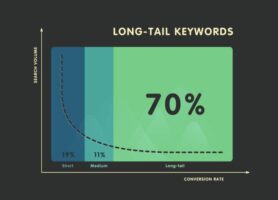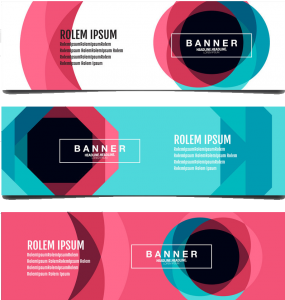Updated 30/03/2025
Ever wonder how your website visitors are finding you? If they’re not typing your URL directly into their browser, chances are they’re discovering you through organic search—and most likely through long-tail keywords.
Ranking on Google’s SERP (Search Engine Results Page) isn’t a walk in the park, especially if you’re going after high-volume, high-competition keywords. If you’re only targeting broad, generic terms, you’re probably getting drowned out by bigger players with massive authority. But here’s the good news: long-tail keywords give you a backdoor into search rankings and can drive high-converting traffic monetization—without the headache of competing for impossible spots.
So, what’s the deal with long-tail keywords? They’re longer, more specific search queries that cater to niche audiences. While they don’t get as many searches as short-tail keywords, they attract people who know exactly what they want. And guess what? These searchers are more likely to convert because they’re already deep into their buying journey.
Think about it: Someone searching for “best running shoes” is probably just browsing. But someone typing “best running shoes for flat feet under $100”? They’re not just looking—they’re ready to buy. That’s high-converting traffic monetization in action.
To make the most of long-tail keywords, you need to bake them into your content strategy. Consistently publishing in-depth, value-packed content targeting these keywords will boost your search traffic, attract paying customers, and strengthen your brand. Plus, it saves you money—why throw cash at paid ads when you can rank organically and pull in sustainable traffic for free?
Want to find the best long-tail keywords? Use tools like Ubersuggest, AnswerThePublic, and Google Autocomplete. Pay attention to People Also Ask and related searches—these gems show what users are actually searching for. But most importantly, make sure your content matches search intent—whether it’s navigational, informational, commercial, or transactional. If your content doesn’t align with what users want, even the best long-tail keywords won’t save you.
At the end of the day, long-tail keywords are your best bet for high-converting traffic monetization. They help you rank faster, attract the right audience, and drive real results—without competing with the big dogs. So, if you’re not optimizing for them yet, now’s the time to start.
Table of Contents
ToggleWhat Are Long-Tail Keywords and Why They Matter for High-Converting Traffic Monetization?

If you’re serious about SEO, you’ve probably heard of long-tail keywords—but what exactly are they, and why do they matter so much?
In simple terms, long-tail keywords are longer, more specific search queries that help search engines understand not just what users are searching for, but why they’re searching for it. Instead of broad, one-word terms that are tough to rank for, long-tail keywords give you a way to tap into niche audiences who are more likely to engage, convert, and buy.
For example:
“Ucha James” is a basic keyword. It’s broad and could mean anything—who he is, what he does, or even a completely unrelated query.
“What does Ucha James know about digital marketing?” is a long-tail keyword because it gives more context. It tells search engines exactly what the user wants—information about Ucha James and his expertise in digital marketing.
Why Are They Called Long-Tail Keywords?
It’s got nothing to do with the length of the keyword itself. The term comes from how these keywords appear on the search marketing curve—also known as the search curve.
Here’s the breakdown:
#1. The Fat Head: This is where you’ll find super popular, high-competition keywords like “Chevy Equinox.” Everyone’s searching for it, but unless you’re a massive brand with serious domain authority, ranking for these terms is nearly impossible.
#2. The Chunky Middle: A little more specific, but still highly competitive. Think of terms like “Chevy Equinox LT.” These still pull in millions of searches per month, making them tough to rank for.
#3. The Long Tail: This is the sweet spot for organic search marketers. It’s made up of highly specific, low-competition queries like “2024 Chevy Equinox color options.” The search volume may be lower, but the conversion potential is much higher because searchers already know exactly what they’re looking for.
Why Should You Care About Long-Tail Keywords?

When you’re running keyword research, it’s tempting to go after those short, high-volume terms. After all, more searches mean more traffic, right? Wrong.
Where there’s high search volume, there’s also high competition. Trying to rank for broad, generic terms is like showing up to a fight with a toothpick while your competitors have rocket launchers. You’re not going to win.
But long-tail keywords? They’re your SEO cheat code.
They’re easier to rank for – Less competition means you have a real shot at landing on page one of search results.
They attract high-intent searchers – People searching for long-tail keywords already have a clear goal in mind. They’re looking for something specific, which means they’re more likely to engage, subscribe, or buy.
They fuel high-converting traffic monetization – When you target long-tail keywords, you’re not just getting traffic—you’re getting the right traffic. The kind that actually converts into sales, sign-ups, or loyal readers.
How Long-Tail Keywords Help You Understand Your Audience
Ranking for long-tail keywords isn’t just about getting traffic—it’s also about understanding your audience on a deeper level.
When you analyze the long-tail keywords that drive visitors to your site, you get real insights into:
#1. What they’re searching for
#2. What their pain points are
#3. What kind of content they actually want
This means you can tailor your content, marketing strategy, and product offerings to directly address their needs—making your brand more relevant and increasing engagement, loyalty, and conversions.
If you’re serious about high-converting traffic monetization, stop chasing impossible, high-competition keywords. Instead, focus on long-tail keywords—they’re easier to rank for, attract the right audience, and drive real results.
By consistently targeting and optimizing for these niche search queries, you’ll boost your organic traffic, grow your brand, and turn casual visitors into paying customers—all while outsmarting competitors who are still stuck battling for those near-impossible short-tail keywords.
So, if you haven’t already, start digging into long-tail keyword research today. It’s the fastest way to SEO success, better conversions, and a stronger brand presence.
Why You Should Be Using Long-Tail Keywords to Drive High-Converting Traffic Monetization

What do you actually want from your content marketing? More traffic? Higher conversions? Both?
Well, here’s the deal: long-tail keywords can bring you both on a silver platter.
Sure, paid ads can get your brand in front of the right people fast, but there’s a catch—you’re paying for every single click. Now, imagine if you could gradually replace those paid clicks with organic traffic. Not only would you save money, but you’d also see better, more sustainable results.
In fact, according to Google’s Economic Impact Report, organic search is five times more valuable than paid search. And if that’s not enough to convince you, check out these stats on long-tail vs. short-tail keywords:
#1. Keywords that are 10-15 words long get 2.18x more clicks than short, 1-2 word keywords.
#2. 77.91% of organic conversions come from search terms that are 3+ words long.
#3. 82.53% of a website’s organic traffic comes from long-tail search terms (3+ words).
#4. Shorter keywords (1-2 words) are 18.26% more likely to fluctuate in rankings than long-tail keywords—meaning, long-tail terms are more stable over time.
So, if you’re only focusing on high-volume, short-tail keywords, you’re probably fighting an uphill battle. Long-tail keywords not only help you rank easier, but they also bring in higher-intent visitors who are more likely to convert, engage, and spend money.
Search Intent & Long-Tail Keywords: The Perfect Match
Here’s why long-tail keywords are so powerful: they align perfectly with search intent—aka, what users are actually looking for when they type something into Google.
And since Google ranks content based on how well it answers a user’s query, you can’t afford to ignore search intent. The better your content matches what users want, the higher your chances of ranking, getting clicks, and making money.
There are four main types of search intent, and long-tail keywords fit into each of them:
#1. Navigational intent → Users are looking for a specific website or page (e.g., “Ubersuggest login”).
#2. Informational intent → Users want to learn more about something (e.g., “what is search intent”).
#3. Commercial intent → Users are researching before making a purchase (e.g., “best keyword research tool”).
#4. Transactional intent → Users are ready to buy or sign up (e.g., “sign up for Ubersuggest plan”).
Now, compare these two searches:
“Ubersuggest tool”
“Sign up for Ubersuggest”
Which searcher do you think is closer to converting? Obviously, the second one. Long-tail keywords tend to signal high-intent searches, meaning the person is already on the road to making a decision. And that alone is a killer reason to start using them in your content.
If you’re not using long-tail keywords, you’re leaving high-converting traffic monetization on the table. These keywords bring in better-targeted visitors, increase conversions, and help you rank higher with less competition.
Plus, they keep your content aligned with search intent, making sure you’re not just attracting traffic but the right traffic that actually converts.
So stop chasing high-competition, short-tail keywords and start focusing on long-tail keywords that actually move the needle for your SEO and business growth. It’s time to work smarter, not harder.
Debunking the Biggest Myths About Long-Tail Keywords?

By now, you’ve probably realized how much of a game-changer long-tail keywords can be for high-converting traffic monetization. They help you rank faster, attract the right audience, and drive real results without competing for those impossible short-tail keywords.
But let’s keep it real—there’s a ton of misinformation floating around about long-tail keywords that could be holding you back. So, let’s set the record straight and bust some of the biggest long-tail keyword myths that need to go.
Myth 1: You Should ONLY Target Long-Tail Keywords
Look, we love long-tail keywords, but putting all your eggs in one basket? Not a good move. If you over-optimize for only long-tail terms and ignore shorter, broader keywords, you could limit your reach.
Google’s SEO algorithms reward user intent, not just keyword length. A balanced mix of short-tail and long-tail keywords will help you cover all stages of the buyer’s journey—from awareness to conversion. Instead of blindly chasing long-tail keywords, focus on creating content that actually helps your audience.
Myth 2: Always Use Exact Long-Tail Keywords in Headlines
Ever read a headline that feels like a robot wrote it? Yeah, that’s what happens when people force long-tail keywords into their headlines.
Yes, including keywords in your headline helps with SEO, but if it sounds unnatural, Google (and your readers) will see right through it. Keyword stuffing is a one-way ticket to SEO penalties.
Instead of awkwardly cramming long-tail keywords into headlines, make sure they flow naturally. The goal is to create headlines that catch attention, drive clicks, and make people want to read more.
Myth 3: Long-Tail Keywords Are Always Cheaper in PPC
A lot of people think long-tail keywords automatically mean cheaper PPC (pay-per-click) ads. But here’s the truth: Some long-tail phrases can be just as expensive—if not more—than short-tail keywords.
Why? Because high-converting traffic monetization is the name of the game. If a long-tail keyword signals strong purchase intent (like “best DSLR camera under $1000”), advertisers bid aggressively on those terms, driving up costs.
While long-tail keywords are often more affordable, it’s not a hard rule. Always check your competition and cost-per-click (CPC) data before assuming a keyword will be cheap.
Myth 4: Ranking is All That Matters
So you hit page one on Google? Great. But what if nobody clicks?
Ranking is only half the battle—the real win is getting people to engage. If your headline is boring, it doesn’t matter where you rank. Users will scroll past your content in favor of something that actually catches their attention.
The fix? Write compelling, click-worthy headlines that speak to user intent. A great headline doesn’t just get you ranked—it makes users WANT to click.
At the end of the day, SEO isn’t about quick hacks—it’s about long-term success. Consistently producing high-quality, helpful content will always outperform cheap tricks.
Use long-tail keywords wisely, but don’t get caught up in the hype. Balance them with shorter terms, prioritize user intent, and focus on engagement over rankings. Do that, and you’ll set yourself up for sustainable SEO growth and high-converting traffic monetization that actually delivers results.
What are Some of FAQs About Long-Tail Keywords & High-Converting Traffic Monetization?
Why Are Long-Tail Keywords Important for SEO?
Long-tail keywords are SEO gold because they help you rank faster and easier than broad, highly competitive keywords. Instead of battling giants for top spots, you’re tapping into niche searches that bring in highly targeted visitors—people who are more likely to convert because they know exactly what they’re looking for. If you’re after high-converting traffic monetization, long-tail keywords are your best bet.
How Do I Use Long-Tail Keywords in My Content Without Overstuffing?
It’s simple—keep it natural. Identify relevant long-tail keywords, then weave them smoothly into your content. The best spots? Headings, subheadings, introduction, and throughout the body—but don’t force it. If it doesn’t sound right when you read it out loud, rewrite it. Search engines (and readers) love content that flows naturally. So, instead of stuffing in a long-tail keyword awkwardly, focus on solving user problems while keeping the language engaging and human.
Can I Use Long-Tail Keywords in PPC Campaigns?
Absolutely. Long-tail keywords in PPC ads can lower competition and cost-per-click while attracting high-intent traffic. Instead of paying a fortune for generic terms, you’re bidding on search queries with serious buyer intent. The result? More qualified leads, better conversion rates, and a higher ROI—exactly what you need for high-converting traffic monetization.
How Do I Measure the Success of My Long-Tail Keyword Strategy?
If you’re not tracking, you’re guessing. Use Google Search Console and Google Analytics to monitor:
✅ Keyword rankings – Are your long-tail keywords moving up in SERPs?
✅ Organic traffic – Is your content attracting more visitors?
✅ Click-through rates (CTR) – Are users clicking on your pages?
✅ Conversion rates – Is traffic turning into sales, sign-ups, or leads?
✅ Bounce rates & time on page – Are visitors sticking around or bouncing fast?
For deeper insights, use keyword tracking tools to see how you stack up against competitors, set SMART goals, and adjust your strategy based on real data. SEO isn’t set-it-and-forget-it—it’s all about refining and optimizing over time.
Conclusion
Search engines aren’t just looking for keywords—they’re looking for value. If you want to rank higher, attract the right audience, and convert more visitors, you need to think like your users. That means matching your content to what they’re actually searching for—and that’s where long-tail keywords come in.
Making long-tail keyword research a core part of your content strategy ensures you’re meeting user intent, providing a great experience, and boosting engagement. And when you speak the same language as your audience, your traffic doesn’t just grow—it converts.
So, if you’re serious about high-converting traffic monetization, stop chasing high-competition keywords that bring in random clicks. Instead, focus on long-tail keywords that connect you with real buyers, increase conversions, and fuel long-term SEO success.








